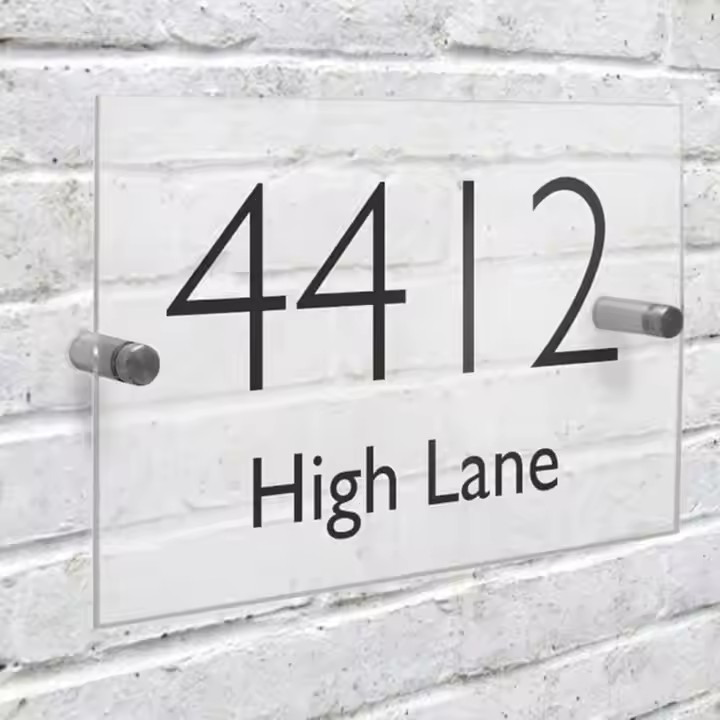

Indoor vs. Outdoor Acrylic Door Signs: What’s the Difference?
Acrylic door signs are widely used in commercial, institutional, and residential environments. However, not all acrylic signs are created equal—especially when it comes to indoor vs. outdoor use.
Choosing the right type of acrylic sign for your environment ensures durability, readability, and a professional appearance over time. In this article, we break down the key differences between indoor and outdoor acrylic door signs and offer tips for selecting the best solution for your space.
🔹 1. Material & Coating
Indoor Acrylic Door Signs:
-
Made from standard cast or extruded acrylic
-
No need for UV or weatherproof coating
-
Ideal for climate-controlled spaces like offices, hotels, schools
Outdoor Acrylic Door Signs:
-
Require UV-resistant acrylic or protective laminates
-
Often use thicker acrylic (e.g., 5mm–10mm) to withstand impact
-
Can include anti-yellowing treatments and weatherproof backings
🔍 Tip: Always confirm with the supplier if the sign is rated for outdoor use to avoid fading, warping, or cracking.
🔹 2. Durability and Resistance
Indoor Signs:
-
Protected from elements
-
Long lifespan with minimal maintenance
-
Less risk of scratches, sun damage, or moisture
Outdoor Signs:
-
Must withstand sunlight, rain, temperature changes, and wind
-
Require strong adhesives or hardware for secure mounting
-
May need regular cleaning to remove dust, debris, or mold buildup
🔹 3. Design & Visual Contrast
Indoor Acrylic Signs:
-
Can include elegant designs like frosted finishes, UV-printed logos, or layered styles
-
Often prioritize aesthetics and brand matching
-
Use refined mounting like standoffs or wall adhesives
Outdoor Acrylic Signs:
-
Prioritize high visibility and weather readability
-
Often use bolder fonts, high-contrast colors, and larger text
-
Designed to remain legible from a distance or in bright sunlight
🔹 4. Mounting Options
Indoor:
-
Lightweight signs can be mounted using:
-
Double-sided tape
-
Magnetic backings
-
Minimal screw mounts
-
Outdoor:
-
Require secure, long-term options such as:
-
Standoff mounts with anchors
-
Screw mounting with waterproof seals
-
Industrial adhesives designed for outdoor materials
-
🔹 5. Common Use Cases
| Use Case | Indoor Acrylic Signs | Outdoor Acrylic Signs |
|---|---|---|
| Office Doors | Nameplates, departments, conference rooms | Building directories, lobby identification |
| Hotels | Room numbers, staff offices | Entrance signs, directional signage |
| Healthcare | Treatment rooms, staff labels | Facility maps, emergency exit signs |
| Retail & Public | Fitting rooms, display plaques | Hours of operation, wall-mounted signs |
✅ Final Advice
When ordering acrylic door signs, always specify the intended location so your supplier can recommend the right:
-
Thickness
-
Material type
-
UV/weather protection
-
Mounting solution
Investing in the correct signage type helps avoid unnecessary replacements and preserves your brand’s professional look for years.




